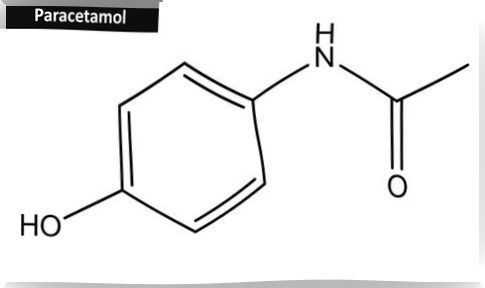Medicine: Learn To Differentiate The Commercial Name Of The Active Principle
There are many people who, today, are not able to differentiate the commercial name of the active principle of a medicine. Therefore, we must clarify these two concepts to avoid confusion.
The active ingredient can be said to be the main “ingredient” of a drug. It is in charge of exercising the pharmacological action in the body. For example, the brand Neobufren is a medicine that contains ibuprofen, which is the active substance. There are different brands, depending on the laboratory, for the active substance ibuprofen.
To understand it better, let’s look at different concepts to have a clear idea and to be able to differentiate the commercial name from the active principle.
What is an active principle?
The official definition of active principle is any matter, whatever its origin (human, animal, plant, chemical or other) to which an appropriate activity is attributed to build a medicine.

The active principles of drugs are the substances to which the pharmacological effect is due. The use of these dates back to prehistory, where it was considered that the principles were plants and natural substances. Later, the components of the plants were isolated and already in the 20th century the chemical structure of many of them was identified.
The effects triggered by the active principles are dependent on the amount ingested or absorbed thereof. In addition, to achieve the desired pharmaceutical form, the active principles are associated with excipients, which are substances that help in the preparation, preservation and administration of drugs without interfering with the pharmacological action.
- A pharmaceutical form is the final arrangement to which both the active principles and the excipients are adapted to form a medicine in order to improve its administration.
Trade name of a drug
Now that we understand the previous concept, we can differentiate the commercial name of the active principle. The trade name of a drug is a pseudonym used by companies to carry out their business.
In the pharmaceutical industry, it is used to identify the drug from a specific pharmaceutical laboratory. The brand name may or may not resemble the active substance of the drug. Let’s see, for example, the case of paracetamol. Paracetamol is the name of the active ingredient, however, it can be sold under the names of:
- Dolocatil.
- Cupanol.
- Apiretal.
- Others
Each of these names belongs to a different pharmaceutical laboratory, but they all contain paracetamol as an active ingredient. However, we must bear in mind that there is another denomination used to name the drugs, which is the generic name.
Do we know that it is a generic?
Generic drugs can confuse us when it comes to differentiating the commercial name of the active principle of a drug.
Well, generic drugs are those that are not distributed with a commercial name, but that contain the same concentration and dosage as their brand equivalent. In other words, generics contain the same active ingredients as brand-name drugs, but are sold under the name of the active ingredient.
We return to the example of paracetamol. We have seen that paracetamol can be sold under various trade names depending on the pharmaceutical company. However, this active ingredient can also be sold under its own name, paracetamol.

Therefore, in a pharmacy we can order the active principle paracertamol in several ways:
- Good for its commercial name that is the brand.
- Or by the name of the active principle, which is the generic.
To recognize if a drug is being sold under the trade name or under the name of the active ingredient, we must look at the packaging of the drug. If it is sold by the name of the active ingredient or generic, the container will show, instead of the trade name or brand, the name of the substance from which it is made according to the DCI nomenclature followed by the name of the manufacturing laboratory.
Advantages of the denomination by name of active principle
As we already know how to differentiate the commercial name from the active principle, we can see the advantage of naming drugs by their generic name. Calling drugs directly by their active ingredient is a clear and simple way to recognize them. This avoids confusion when dispensing or prescribing.
In contrast, brand-name drugs have an average of five different brand names for each active ingredient, which creates confusion for both healthcare professionals and patients.
- For this reason, laws are being implemented that oblige doctors to prescribe with the name of an active principle.
- In this way, both the prescription and the dispensing or understanding by the patient will be facilitated.
- By means of this prescription, the patient is allowed to know the active principle that has been prescribed for his disease regardless of the brand or laboratory that markets the medicine.
See also:









